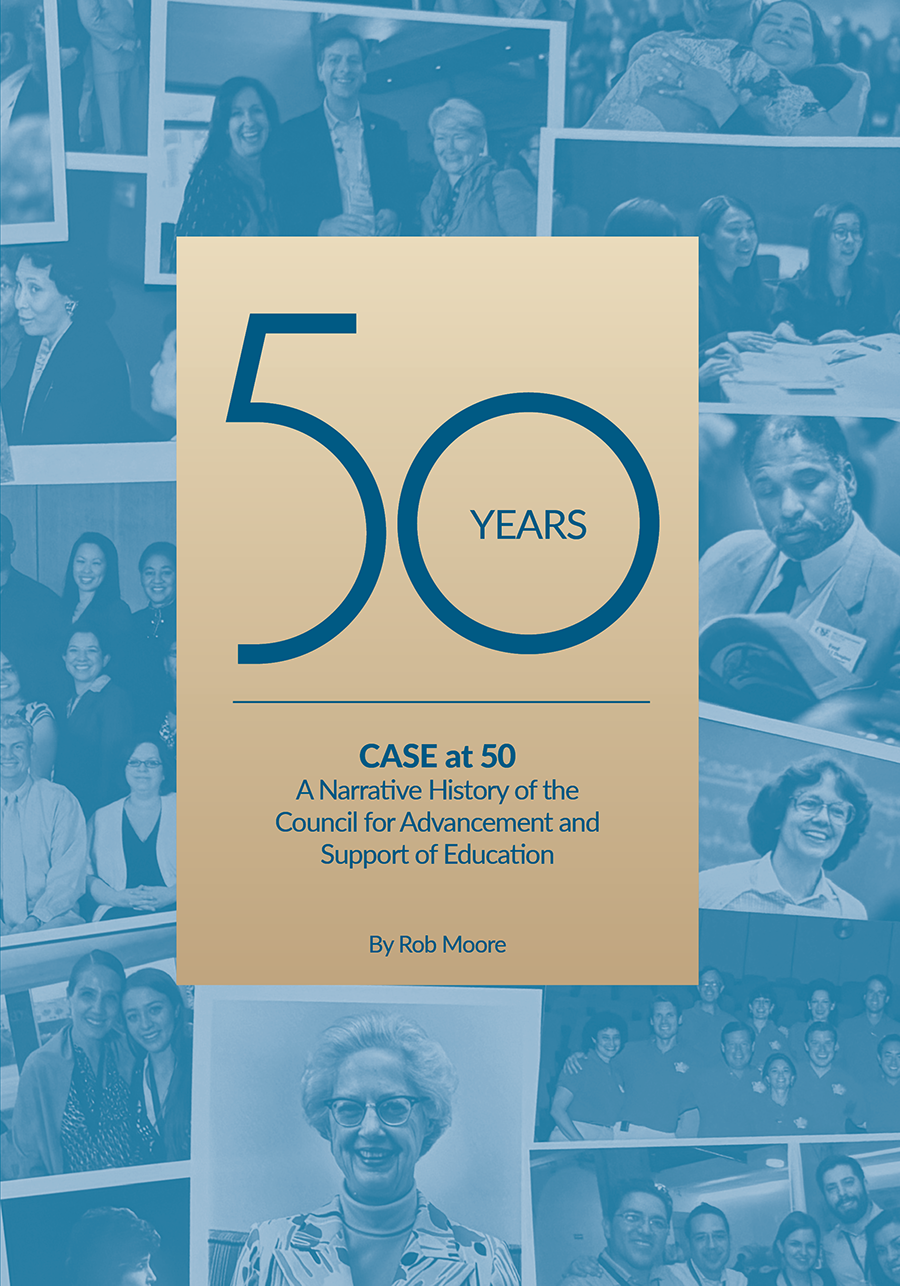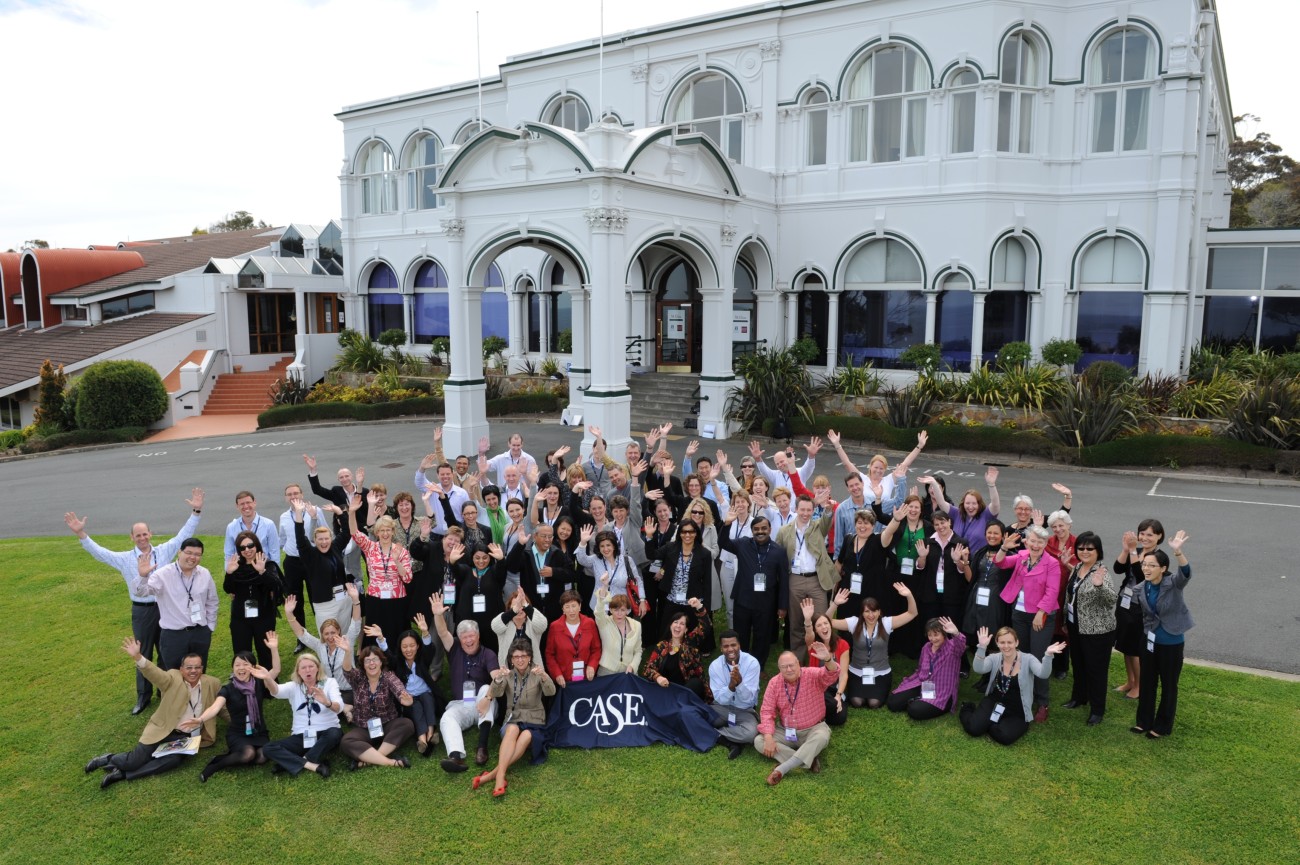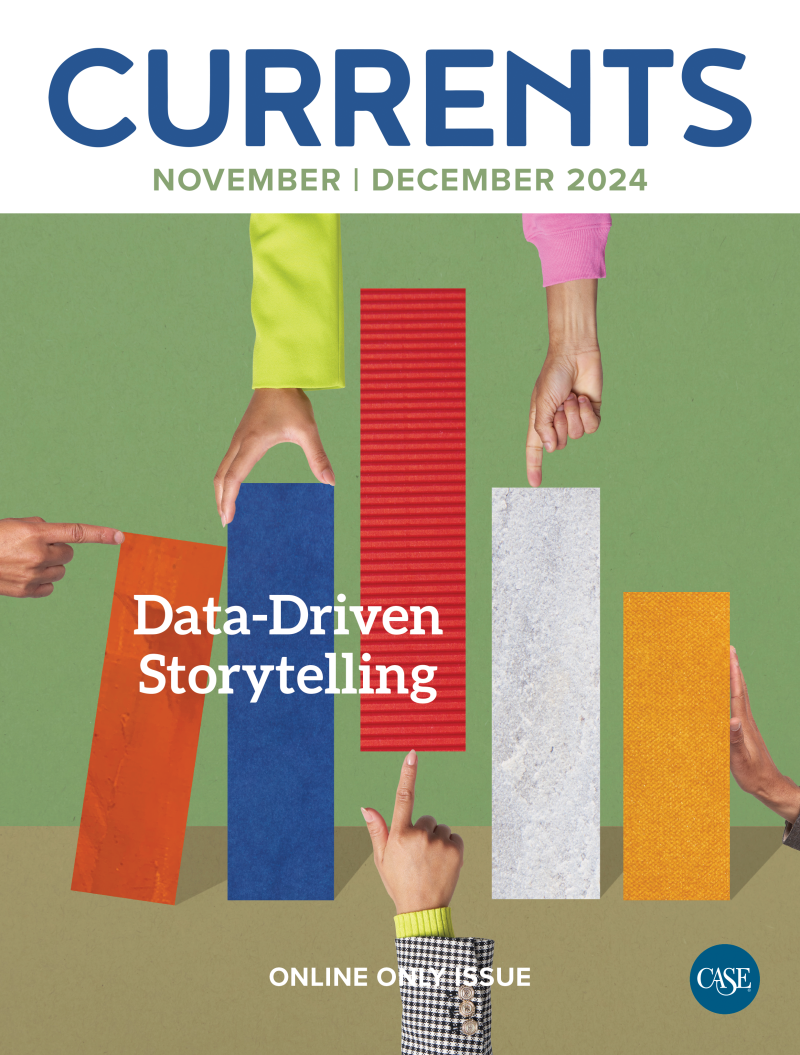Expanding the Map

This is the final piece in our series of excerpts from CASE at 50: A Narrative History of the Council for Advancement and Support of Education. The book, commissioned by CASE and written by Rob Moore, highlights special moments and seminal stories from the organization’s first 50 years.
The story here is adapted from Chapter 12: A New Map, about the development of CASE’s work in Asia throughout the 2000s and 2010s.
In March 2007, the CASE and CASE Europe Boards of Trustees met in Oxford, England, [U.K.], for a deep dive into the context and environment for CASE international programming, leading to the Oxford Accord. With frequent requests from institutions and potential partners in countries and regions where CASE involvement could be described as slim to none, volunteer leadership was presented with a report titled “Going Global.” The pre-reads for the Oxford meeting included data supporting continued demand for CASE offerings, with attendance in North America up by 16% over a six-year period, while attendance in CASE Europe events had grown more than 150%. CASE international members could be found in 54 countries, with 3 countries—the U.K., Canada, and Australia—accounting for two-thirds of all institutional members outside the U.S. The report asserted that CASE was enjoying “continued successes and growth trends on every operational indicator for the organization—finances, membership, conference participation, and positioning.” The report also featured case studies of other nonprofit organizations and associations that had developed an international presence. In Oxford, board members and staff took pride in what had been accomplished while grappling with the question “What’s next?” Joanna Motion describes the Oxford meeting as helping to create real momentum in shaping programming in Asia-Pacific and beyond.
“Their worldview was genuinely interested in an international presence,” recalls Motion, with many of the participants representing institutions that had an on-the-ground presence outside their native countries. …
“The situation in Asia is very diverse,” attests Chua Beng Hwee, who was the Executive Director of CASE Asia-Pacific for a decade. “Some economies and political situations are very stable, very prosperous. On the other hand, some are struggling. Political and social conditions change. Then there’s the problem of languages: For success in China, we need more programming in Mandarin, whether it’s CASE@Campus or at a major conference.”
Motion emphasizes the importance of developing a true worldview when considering programming or services in new terrain: “You have to be able to acknowledge that you will make mistakes, and you seek to learn, admitting, ‘I don’t quite get this, can you please help?’” Motion, though, had the benefit of decades of international experience: Born in India, lived in Nigeria, educated in England, and leading advancement programs in Australia and the U.K., she “learned to implicitly challenge my worldview. Where’s the centre of the world? Am I reading the clues right? To have that questioned is to open your mind to different people, to do things differently. Sacred cows can be slaughtered. It is humbling. There are very few absolute truths. Culture is real.”
Krista Slade, the first Executive Director of CASE Asia-Pacific, highlights a specific example of this cultural sensitivity, of particular concern to development professionals: “There are very real taboos in traditional Confucian cultures around discussing death and dying. When we were doing training on planned giving, we had to think very carefully about how to approach this in a thoughtful and appropriate way.”
We could add “there are very few absolute truths” and “culture is real” to the three Nichols Principles for any organization growing into new regions: Bring your presumptions, but expect to have them challenged.
Being part of CASE, though, nobody sat on their hands while programming grew. During another joint meeting of the CASE and CASE Europe boards in April 2013, the CASE Asia-Pacific Advisory Council met and framed the need for action plans to address four priorities:
- Workforce development—promoting advancement as a career
- Benchmarking—building tools to measure advancement investment and success
- Public policy—engaging governments and other stakeholders
- Membership outreach—developing core membership and programming
Co-chaired by Sue Cunningham, then Vice-Principal for Advancement at the University of Melbourne, Australia, and William Purcell, Pro Vice-Chancellor (International and Development) at the University of Technology Sydney, Australia, the CASE Asia-Pacific Advisory Council proposed a governance structure for CASE Asia-Pacific. Singapore-based staff would report in principle to the CASE Vice President for International Operations, as well as to the CASE Asia-Pacific board, which consisted of three members from Asia-Pacific countries (Singapore, in particular), one member from the CASE Board of Trustees, and ex-officio members from CASE Europe and CASE headquarters staff. A positive response to programming signaled the potential of this model, with CASE Asia-Pacific counting 193 institutional members from 26 countries in 2013, representing just more than 5% of CASE’s total institutional membership. Programming would focus on traditional CASE strengths: training and professional development, knowledge leadership, community and networks, and career development. Strong programs had been built throughout the region, supported in part by multi-year grants from the Lee Foundation, Singapore’s largest independent charitable entity. The foundation’s giving focused on what had been the historic philanthropic concerns of founder Lee Kong Chian, who had long supported independent schools and Singapore’s universities.
Programming included a growing annual gathering (the CASE Asia-Pacific Advancement Conference, or APAC); separate institutes in educational fundraising and in alumni relations; and an annual schools conference. There were also developmental programmes in Singapore; Shanghai, China; Hong Kong; Bangkok, Thailand; Fudan, China; and Sydney, Perth, and Melbourne, Australia, buttressed by online programming.

GLOBAL GATHERINGS: CASE's programming in Asia-Pacific includes the Asia-Pacific Institute in Educational Fundraising (pictured here in 2009 in Victoria, Australia), which offers foundational training for newcomers to the profession.
The 10th anniversary of APAC in Singapore in 2017 couldn’t pass without notice and needed some drama, and organizers came up with a doozy. Thinking globally, they used the closing session to showcase how far CASE had come in engaging the executive suite. Titled “103: A CASE Higher Education Leadership Symposium,” the session featured 11 institutional and advancement leaders who spoke to 400 delegates at the Grand Hyatt in Singapore:
- Michael Arthur, President and Provost, University College London, U.K.
- Tan Chorh Chuan, President, National University of Singapore
- Peter Coaldrake, Vice-Chancellor and CEO, Queensland University of Technology, Australia
- Glyn Davis, Vice-Chancellor, University of Melbourne, Australia
- Cheryl de la Rey, Vice-Chancellor and Principal, University of Pretoria, South Africa
- J. Michael Goodwin, President and CEO, Oregon State University Foundation, U.S.
- Lily Kong, Provost, Singapore Management University
- Sir Peter Mathieson, President and Vice-Chancellor, University of Hong Kong
- James H. (Jim) Moore Jr., President and CEO, University of Illinois Foundation, U.S.
- Anton Muscatelli, Principal and Vice-Chancellor, University of Glasgow, U.K.
- Angina Parekh, Deputy Vice-Chancellor: Academic, University of Johannesburg, South Africa
The group was asked to address a persistent CASE question: In turbulent times, how can we best advance education to transform lives and society? In their responses, these leaders proved that they did not rise to professional prominence by being devoid of ideas or unwilling to share them. After intense discussion and late-night brainstorm sessions, they closed APAC 2017 by sharing 10 “Big Ideas” that covered three main themes: Become Effective Partners, Help Us Shift the Narrative, and Help Us Do Better.
Become Effective Partners
Big Idea 1: Alignment
Align your work with your institution’s strategic goals and help your institution get those goals right. The leadership team needs you to look up, step up, and operate strategically. We need you persuasively to navigate complexity with gravitas, to work out how to become influential within the academy. We need all the talent pushing for future success. We want you to be good enough to earn a seat at the top table. In changing times, we need you there.
Big Idea 2: Connection
Your leadership team needs you to help build bridges between our internal and external communities. In a world where experts may no longer be trusted, we need to do better at connecting with all of our communities. The reputation for living in ivory towers needs challenging. We need help translating what the university does for the many different external communities with which you work. We need to be known, seen, and understood so even the disenfranchised understand our purpose. Please put yourselves at the heart of that power to connect.
Big Idea 3: Engagement
Help engage all of our communities, including students, staff, alumni, donors, fellows, governors, corporations, governments, cities, and countries. Leadership needs help to create a powerful connected context in which our universities can flourish. All strands of that community need to be kept well informed, be kept close, and feel fully engaged. They need to be engaged in a targeted conversation with us to grow engagement, forge friendship, and develop reputation. This must include confident advocacy with government and public agencies. Universities hold the power to transform; we must not let government off the hook.
Big Idea 4: Integration
Leadership teams need you all to work together in effective partnership. You may work in marketing, communications, alumni relations, fundraising, advancement services, government relations, or one of the many others strands of professional practice gathered under the broad CASE umbrella. It doesn’t matter; the message is clear—please avoid working in silos and find ways to operate in a totally integrated way. Whether you are part of the same structure or not, find ways to cooperate and collaborate to make best use of our resources. We need to find ways to make the most of your potential to advance our institutions.
Help Us Shift the Narrative
Big Idea 5: Storytelling
Universities need to develop a new narrative that focuses on the central importance of the value of education. Leadership teams need you to harness the power of compelling storytelling for all our communities and stakeholders to demonstrate the value, purpose, and impact of a university. We need vigorous defense of the knowledge project at the core of sustainability of universities. We live in a world where our purpose is challenged daily by digital disruption and Silicon Valley alternative propositions. Help us frame our stories of research-informed teaching against these counternarratives. Help us shape the national and global discourse on higher education.
Big Idea 6: Impact
Leadership teams need to gather, understand, and authentically describe all the remarkable things we do. Help us know and proudly claim the good we do in the world. We need to do that better than we do now. Together, we need to describe the full value proposition of a university. Help us run intense engagement activities and explain our role and impact effectively so the value of higher education is better understood by all of the people who matter to us.
Big Idea 7: Gather
Help us amplify the impact and value of higher education on people and society by gathering supporters. Help us persuade, engage, and activate powerful friends and supporters to defend and promote our universities. At our best, together, we can turn story into action and create armies of motivated volunteers, advocates, storytellers, campaigners, and philanthropists.
Help Us Do Better
Big Idea 8: Social Media
University leadership is from the wrong generation. We know social media and emerging digital opportunities are powerful and increasingly shape our landscape. We need help to get this right. Teach us and the academy why it matters. Help us learn both the agility and the skills we need to be successful in this new space.
Big Idea 9: Student Experience
The “golden thread” of the whole student experience from first point of contact to alumni relations and for life needs to be well managed. Our student experience is the heart of the success of our institutions. Help us “promise what we deliver and deliver what we promise” in an authentic way.
Big Idea 10: Alumni
Our alumni are among our most powerful partners. They can open doors, advocate on our behalf, give us their time and their money, connect us across the world, and offer all sorts of practical support to today’s students. Leadership needs you to be persuasive about their potential role in our world. If students have had a good experience, they become powerful and connected alumni advocates for life. Leadership teams need you to make the connection. There is huge potential in the alumni community. There are 61 million alumni in the U.S. alone. How can their collective voices be used to advocate for the sector and the power of education to transform?
And with that, this assortment of global leaders scattered for the flights that would take them back to their home countries. But in addition to the knowledge assembled and dispensed, some other important connections took place, as is the CASE way.
“CASE is a community of kindred spirits,” explains Mathieson. “I find people I can truly identify with. Jim Moore, who I met through CASE, has become one of my best personal friends. I will be friends with Jim for the rest of my life.”
Moore feels much the same, saying, “A serendipitous encounter has turned into a lifelong personal friendship—an example of the relationships created through the global CASE community. CASE is more than a professional member association; it is a global family.” Indeed, the CASE bond is often described as familial, and Mathieson’s subsequent leadership at the University of Edinburgh, U.K., reassured Jim and Shelli Moore that their daughter would be in good hands when she chose Scotland’s flagship when it was time to “go to uni.”
This story—about the connectivity that happens through the magic of human encounters—is repeated daily throughout CASE. Strong friendships have been sparked and sustained through CASE over the decades. Institutes, conferences, and workshops are planned by volunteers who get to know one another by working together, attended by faculty and delegates who engage colleagues in time allotted for networking conversations at all educational events, and committees and commissions that offer plentiful opportunity to strengthen relationships.
Tags
Article appears in:

November - December 2024
DIGITAL-ONLY ISSUE - Using data, visualizations, and infographics to reach donors and alumni.
Plus communications strategies for corporate relations professionals, the story behind one university's new alumni center, a look inside CASE's new Latin America benchmarking project, and more.